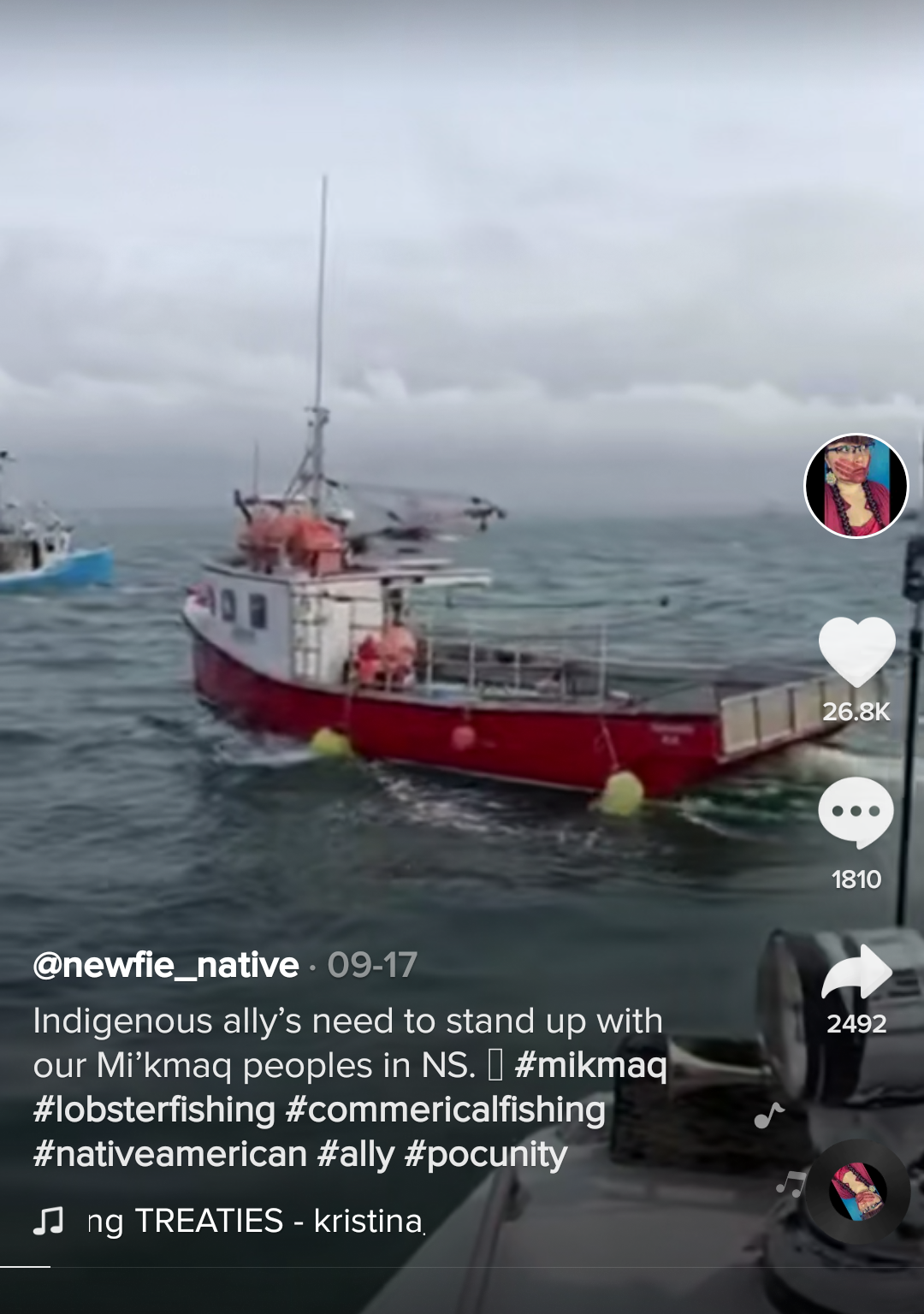The app has helped spread the word about the Mi’kmaq fishing conflict on the east coast of Canada
On TikTok, hundreds of videos under hashtags such as #treatyrights, #mikmaq, and #indigenousmovement showed non-Indigenous fishers vandalizing Indigenous fishers’ lobster traps, and even firing flare guns at the Mi’kmaq on their boats.
Towards the beginning of September, the Sipekne’katik First Nation launched a self-regulated fishery in Saulnierville, Nova Scotia. This was outside of the regular lobster fishing season, and resulted in conflict with non-Indigenous fishermen in the area, causing the Mi’kmaw Chiefs to declare a state of emergency.

The Sipekne’katik First Nation was contacted for a response but have yet to reply.
“People should care about this, because it’s been a vicious cycle for my people since the first contact with colonists,” said Stacy Katsi’tsaronhkwas Pepin, who is Iroquois Mohawk of the territory of Kanesatake, a student at John Abbott College, and a TikTok creator with over 10,000 followers.
“I raised my voice on the fisheries in Nova Scotia because the Mi’kmaq people have their birthright to hunt or fish because that is their tradition,” said Pepin, explaining that she wanted to use her platform to spread awareness.
Pepin explained that she found out about what was going on in Nova Scotia because of TikTok.
“My Mi’kmaq cousins are being threatened because of the traditional birthright to fish year round, whereas the non-Indigenous have a specific season to fish,” explained Pepin, saying that Indigenous fishers are having their equipment stolen and vandalized.
Non-Indigenous fishers are angry that the Mi’kmaq are lobster fishing “out of season,” but according to an article by APTN News, the Mi’kmaq have a legal right to do this.
According to the article, the Supreme Court of Canada released the Marshall Decision in 1999, which created the Moderate Livelihood. This stated that the Mi’kmaq are allowed to fish for their livelihood, but the federal government is allowed to regulate fishing in the interest of conservation, according to a CBC article.
“There is no place for the threats, intimidation, or vandalism that we have witnessed in southwest Nova Scotia. This is unacceptable,” said federal Fisheries Minister Bernadette Jordan in a public statement.
“I believe that TikTok, no matter the racial issues, is a fast way to get educational videos across, everyone uses it,” said Pepin, who explained that many videos about BIPOC social movements use specific hashtags, such as the Mi’kmaq fishing dispute’s #treatyrights. If a video goes viral, those hashtags allow people to hop from video to video, which spreads awareness quickly.
“Speaking about Indigenous issues is something I like to educate people on, because people need to know. We as Indigenous people will always protect each other and even though I am in a different province, I try my best to help out my cousins across the world,” Pepin said.
Pepin explained that there is a strong Indigenous community on TikTok, and this community is important because it connects Indigenous people who have become disconnected from their culture, possibly as a result of residential schools or the Sixties Scoop.
“From beautiful displays of regalia, to music, to teachings about residential schools, or the significance to how we braid our hair,” said Pepin, describing various Indigenous TikTok videos.
“Even for those who appreciate our culture, it is a great window into our world, through its beauty and chaos. It shows our struggles and it shows our strengths,” she said.
“TikTok is just the latest app to be used for citizen journalism, documenting and sharing what’s happening at the scene of an event or protest,” said Stefanie Duguay, assistant professor in Concordia’s department of Communications Studies.
She explained that TikTok’s videos are short and snappy, grabbing our attention and capturing our emotions, which compels us to become involved and share the message of the video. However, while social media creates a space for those affected by oppression to speak out about issues, social media platforms profit from the quick news cycle and the constant flow of new information, which can cause minority voices and issues to be buried under the steady stream of new content.
“I think a lot of people are realizing the historical and systemically reinforced invisibility of issues relating to minoritized groups,” said Duguay. “[They are] recognizing that longstanding news-related institutions contribute to this, [and so they’re] taking measures to ensure that people continue talking about and reflecting on these issues until actual change is brought about.”
Feature graphic by Taylor Reddam.




